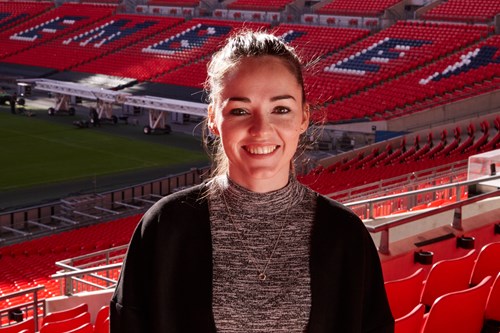Who’s right? A commentary by BSc Sports Psychology lecturer Dr Leah Johnstone about the relationship between handedness and our brain systems.

Handedness is a subject area shrouded in myths, many of which have proven difficult to shake. Invariably handedness researchers are faced with queries which assume the position that left handers are more artistic or inventive, as well as questions about people being right vs left “brained”.
In these theories, the right hemisphere is seen as a creative genius, being subdued by its opposing logical left hemisphere. The reality is the brain doesn’t really work that way; the two sides of the brain do indeed have some differences in their functioning, but they are largely the mirror image of one another and they work together.
The myths about asymmetry in brain functions are, in fairness, distantly grounded in the truth. Cognitive functions such as language and face recognition tend to be dominant in one hemisphere or the other. That means, one hemisphere does more of that process than the other hemisphere. It doesn’t mean the other hemisphere is not involved at all. The majority of our knowledge on the asymmetries of functions such as language has come from research involving stroke patients. When a person has a stroke, it can be the case that one hemisphere is severely affected whilst the other is relatively unharmed. Investigating the relationship between the location of the brain damage, and any impaired functions, allows us to demonstrate the damaged area of brain must be involved in the function that has been impaired. Typically, the most striking and reliable impairment after a stroke is language difficulty after left hemisphere damage.
But what if you’re left-handed? Isn’t a left-handed brain the reverse of right-handed brain somehow? The short answer is, no. The vast majority of individuals, both right and left-handed, have their left hemisphere to thank for most of the heavy lifting in terms of language. Current (and historical) estimates suggest about 95% of right-handers, and 70% of left-handers are left hemisphere language dominant (supported in Carey & Johnstone, 2014). However, for those of us who are interested in how limb preference and brain organisation are related, the difference between 95% and 70% is significant. It shows that although it is a minority in both cases, far more left-handers than right-handers are right hemisphere language dominant. And we don’t know why that would be.
My colleagues and I have been working in this research area for some time, and have recently published an article in Neuropsychologia assessing brain asymmetry for language, face perception and body perception in both right and left-handers. Face and body perception are thought to be typically right-hemisphere dominant functions, although little research has been done in large samples of right and left-handers to confirm this hypothesis. We were interested in whether modern research techniques allow researchers to reliably assess function dominance in healthy individuals using functional magnetic resonance imaging (fMRI) scans. These methods have been employed for some time, but usually on groups of people to produce an average, rather than to accurately assess individual brain asymmetry. Additionally, fMRI studies typically only include right-handers, and only assess one asymmetry (usually language).
We found that the majority of both right and left-handers were left hemisphere dominant for language (94% vs 74% respectively). There were also significant correlations between two scan sessions on each of the tasks: a language task, a face perception task, and a body perception task. What that means is that most people who were left hemisphere dominant on session one were left hemisphere dominant on session two (and vice versa). This finding shows that these methods can be used to assess brain asymmetry on an individual level.
The practical applications of this work are vast. If we can use short neuroimaging sessions to assess asymmetry at an individual level, we can circumvent the need for complex neuropsychology patients, and we can gather vast amounts of information from the same participant within one scanning session. When it comes to language dominance, once we know “who’s right” we can investigate why they are right. So, what implications does being right have?
In the sports industry we are obsessed with sidedness – footedness and handedness play a key part for our favourite athletes in our favourite sports. Learning more about brain asymmetries directly informs knowledge about limb asymmetries. For example, understanding how lateralisation of a function impacts sidedness could help us to develop neuropsychological interventions to encourage athletes to improve their non-dominant side. Doing so could improve performance and gains for clubs in a variety of sports. Additionally, we could improve rehabilitation for athletes who have experienced traumatic brain injury as a result of their sport participation, as well as stroke patients, by being able to identify brain regions to target to encourage neuroplasticity. However, we must strengthen fundamental knowledge about brain organisation before we can apply it in real-world sporting scenarios.
















